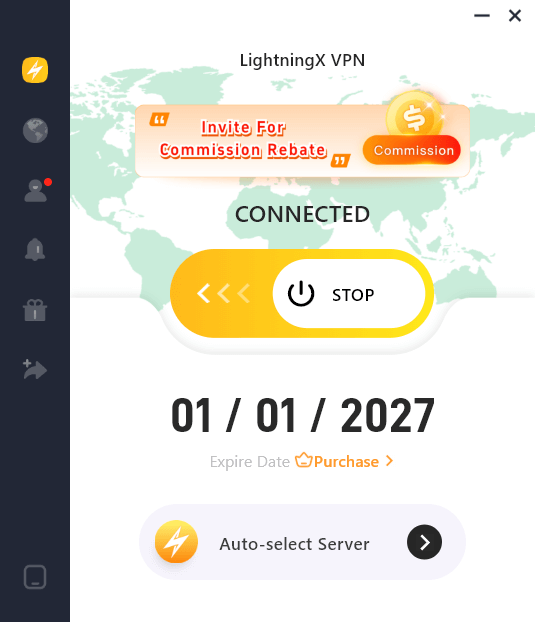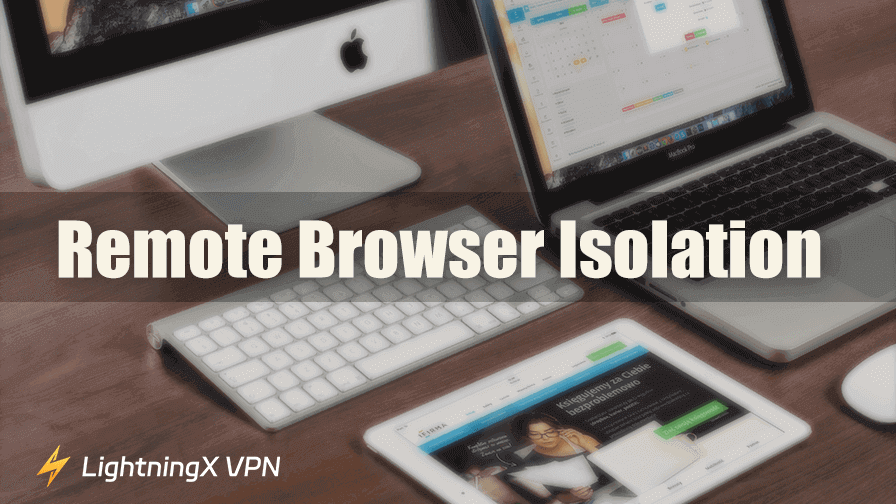The open Internet is like a double-edged sword; it serves as an important productivity tool but always comes with various security risks, such as malicious links, malware, and viruses. Organizations, like businesses, must prevent such risks. And Remote Browser Isolation (RBI) is an important measure to help them use the Internet safely.
So, what exactly is this technology, and how does it work? Keep reading this post, and you’ll know everything about it.
What Is Remote Browser Isolation?
Definition
Remote Browser Isolation (RBI) is a web security measure that protects users from online threats by running all internet browsing activities in a remote, isolated environment, away from the user’s local device or network. It acts like an “air gap” between users and the network.
Instead of loading web pages directly on your computer or phone, RBI opens them in a secure container (often on a cloud or remote server). The system then sends a safe visual representation, such as rendered pixels, streaming images, or mirrored DOM data, to your browser.
This means that even if a website contains malware, phishing scripts, or zero-day exploits, they can’t reach or infect your endpoint, because the code never actually runs on your device.
Working Principle
When a user tries to access a website, Remote Browser Isolation opens the site in a secure remote environment, such as a cloud server or isolated container, instead of executing it directly on the user’s device.
- Policy Evaluation: The system first checks the website against security policies to determine potential risks.
- Remote Execution: If a threat is detected, the platform loads and executes the web content inside a remote, isolated browser.
- Safe Rendering: The visual output of the page, either as streamed pixels or a safe HTML mirror, is sent to the user’s browser in real time.
- Complete Isolation: Even if the website contains malicious code, it runs only in the remote environment and cannot infect the local device.
Through this process, RBI ensures that web content runs remotely while only safe results are displayed locally, effectively blocking browser-based attacks at their source.
Related: How to Prevent Cybercrime? The Secret Behind Cybercrime
Key Benefits of Remote Browser Isolation
Here’s why users choose this technology:
Protection from Web-Based Threats: Because RBI allows web pages to execute in a remote, isolated environment, malicious code never comes into contact with the user’s device, thereby eliminating the risk of infection at its source.
Prevention of Data Leakage: Because all web interactions take place within a remote, isolated environment, RBI prevents sensitive information from being transmitted or exposed to untrusted websites. By controlling file downloads, clipboard access, and form submissions, it effectively reduces the risk of accidental or intentional data leakage.
Enhanced Zero Trust Security: RBI reinforces the principles of Zero Trust by treating all web content as untrusted by default. Every website is opened in an isolated session, ensuring that no code or data from the external source can directly interact with the internal network or endpoint, thereby strengthening an organization’s overall security posture.
Compatibility and User Experience: Despite running web sessions remotely, RBI delivers a seamless browsing experience through real-time rendering technologies such as pixel streaming or DOM mirroring. Users can securely access websites from any device without installing additional software, maintaining both high compatibility and an intuitive user experience.
Common Use Cases of Remote Browser Isolation
Here are the common use cases of RBI.
- Corporate and Enterprise Environments
- Financial and Healthcare Sectors
- Cloud Access and SaaS Security
- Remote Work and BYOD Policies
Whether for corporate employees, financial clients, healthcare systems, remote workers, or users accessing SaaS, web pages, and applications may carry malicious code. RBI prevents these threats at their source through isolation and policy controls, safeguarding critical data from leakage or malicious harvesting.
Although different organizations or use cases may emphasize different aspects of RBI, such as security, data protection, compliance, or user experience, the core rationale for deploying RBI remains the same: to securely isolate risks, protect data, mitigate threats, and provide flexible deployment while maintaining an optimal user experience.
Challenges and Limitations
RBI services can have disadvantages because sandboxing is resource-intensive, and web sessions must be streamed to users.
- Latency and Performance Issues: The transfer of session data between the user endpoint and the sandbox can increase latency, and longer sessions may negatively affect performance.
- Cost and Resource Requirements: RBI solutions can be resource-intensive, requiring substantial server capacity, bandwidth, and maintenance, especially for cloud-based deployments that stream sessions to multiple users simultaneously. These requirements may increase operational costs compared to traditional security solutions.
- Integration Complexity: Deploying RBI within an organization’s existing IT infrastructure may involve complex configuration and integration with security policies, identity management systems, and network architectures. Ensuring seamless compatibility with endpoints, cloud services, and enterprise applications can require careful planning and technical expertise.
Tip: For individuals, RBI might not be a practical option for securing online data. Alternatively, a VPN is a quick security tool that hides users’ IP addresses and browsing history. LightningX VPN is a robust VPN tool. Its top-tier protocols and algorithms help build a seamless encryption tunnel for transmitting users’ traffic.
Aside from the security feature, LightningX VPN’s massive servers and fast speed allow you to access geo-restricted content at the breeze.

Future Trends and Innovations
AI and Behavioral Analytics Integration: RBI platforms are increasingly incorporating artificial intelligence and behavioral analytics to enhance threat detection. By analyzing user behavior and leveraging threat intelligence, systems can predict potentially malicious web activity and dynamically isolate high-risk sessions before they reach the user’s device.
Edge and Cloud Optimization: Future RBI deployments will increasingly leverage edge computing, content delivery networks (CDNs), and Secure Access Service Edge (SASE) frameworks to reduce latency, optimize session performance, and provide scalable, low-latency isolation for users across distributed locations.
Broader Adoption Across Industries: As awareness of web-based threats grows, RBI is expected to see wider adoption beyond traditional enterprise IT, including finance, healthcare, education, and government sectors, where data protection, regulatory compliance, and secure remote access are critical.
Other Types of Browser Isolation
Aside from RBI, there are two other common types of browser isolation.
- On-Premises browser isolation provides the same isolation and protection as standard RBI, but it is deployed within an organization’s own infrastructure.
- Client-side (or local) browser isolation runs on a user’s device using a virtualized sandbox or specialized software. All web content is executed locally on the virtual machine, isolating browsing activity from the host system and clearing all data after each session.
Conclusion
In summary, Remote Browser Isolation is a robust security mechanism that isolates web content from user devices, protects sensitive data, ensures compliance, and strengthens overall cybersecurity posture without significantly affecting user experience.
From past to future, RBI continues to be an indispensable tool for maintaining cybersecurity.


















